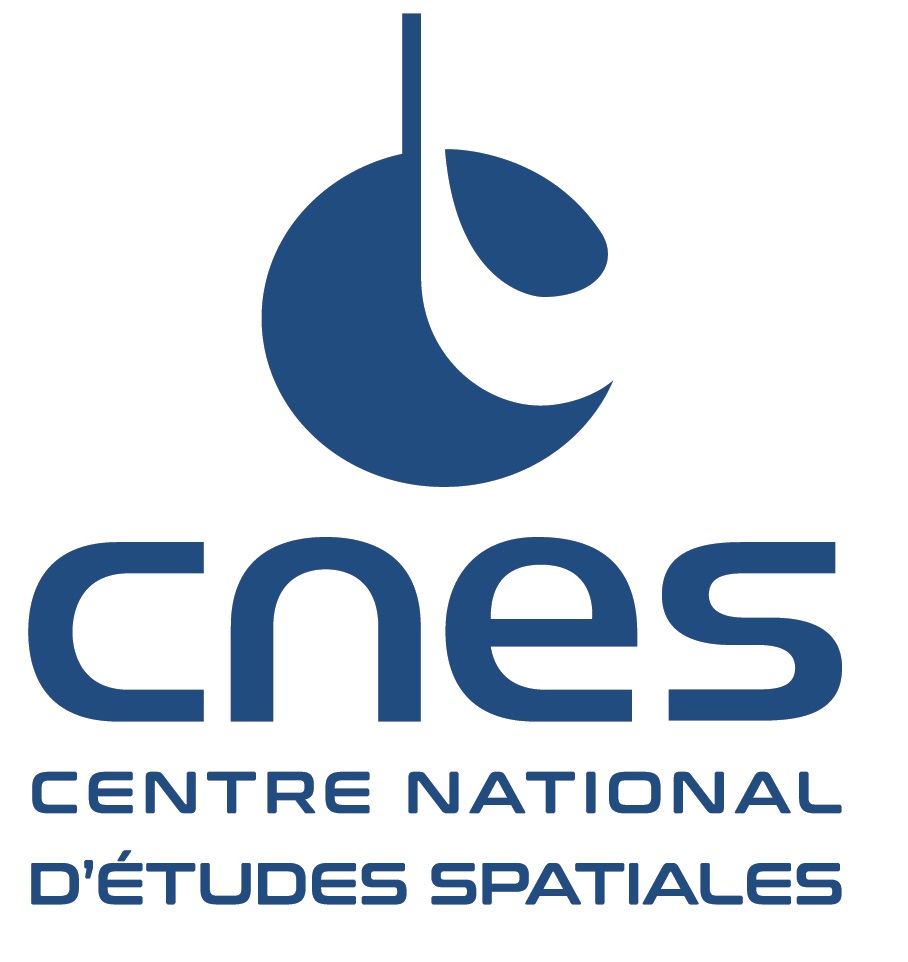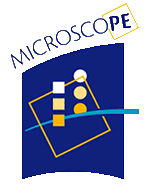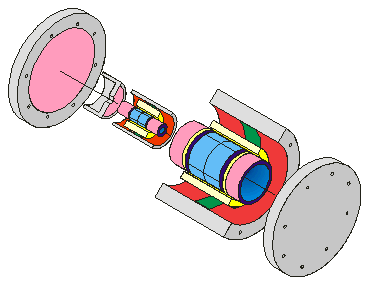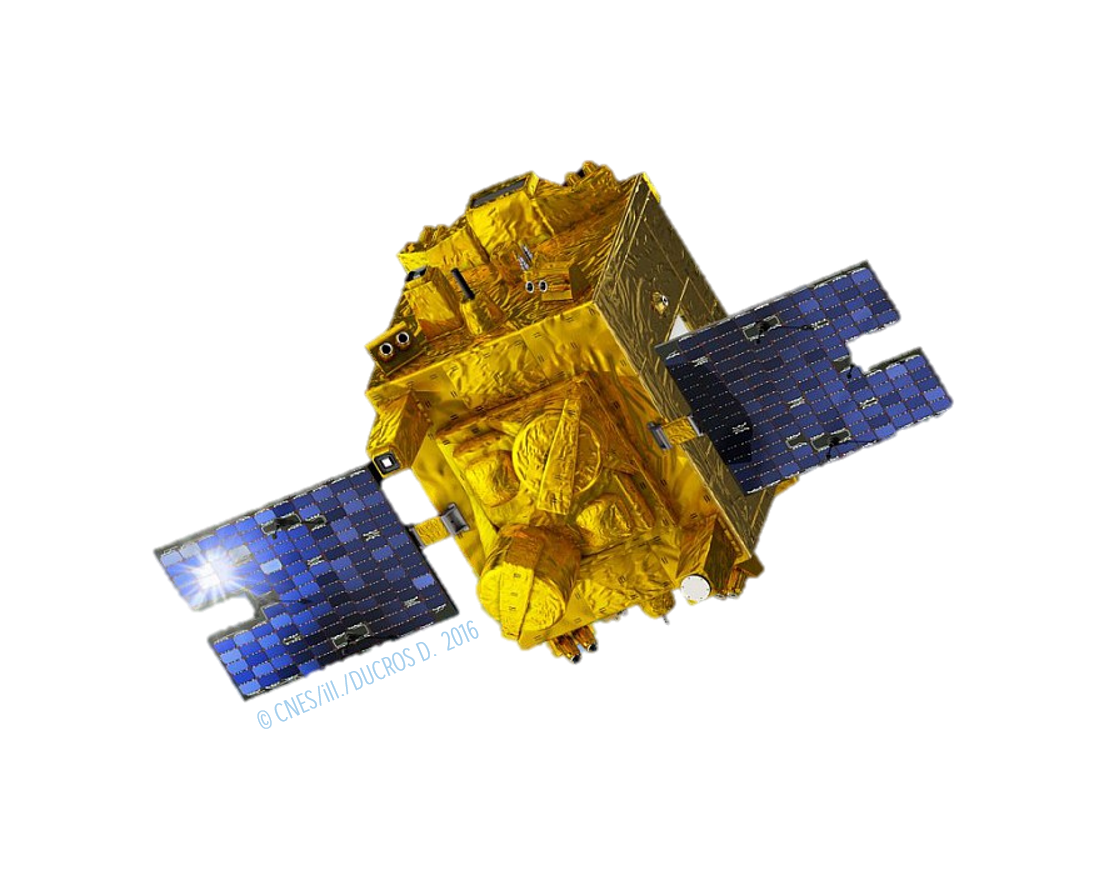 |
 |
 |
 |
MICROSCOPE
The T-SAGE instrument (Twin-Space Accelerometer for Gravity Experiment) is constitued of two differential accelerometers. Each of them is composed of a mechanical part and an electronic part.
The mechanical part is mainly composed of two concentric cylindrical proof masses with six degrees of freedom. The functioning principle is similar for the two masses of the same accelerometer: they are controlled in the centre of a cage in silica thanks to electrostatic forces (electrostatic levitation). The position and attitude variations of a proof mass, induced by a modification of the environment, are measured with capacitance detectors. These measurements, through control loops, generate tensions applied to electrode implanted on the silica cylinder and distributed around the proof masses which are converted into electrostatic forces that maintain its position and orientation. The measurement of the applied tensions allows deriving the acceleration of the proof mass.

To test the Equivalence Principle (i.e. the similarity of the free fall for two bodies of different composition in an identical gravity field), two differential accelerometers are successively used. One has test masses made of different materials (platinum and titanium). The other, whose two test masses are of the same material (platinum), constitutes a measurement reference for the experiment.
The challenge of the T-SAGE instrument developed by ONERA for the Microscope mission lies in the level of targeted performances which impose extreme accuracies and mechanical adjustments while sustaining the constraints of spatial missions, like the launch.
Orders of magnitude:
- Total mass of the instrument: 39 kg
- Test masses:
- inside in platinum = 0.4015 kg
- outside in platinum = 1.3598 kg
- outside in titanium = 0.3009 kg
- Resolution of the acceleration measurement ~ 0.1 pico-g / Hz½ in the range [10-3Hz - 2x10-2Hz]
- Test-mass position control accuracy: 0.1 nano-m / Hz½ in the range [10-3Hz - 2x10-2Hz]
- Temperature control at EP mesurement frequency < 0.1µK
Source: CNES Website.

